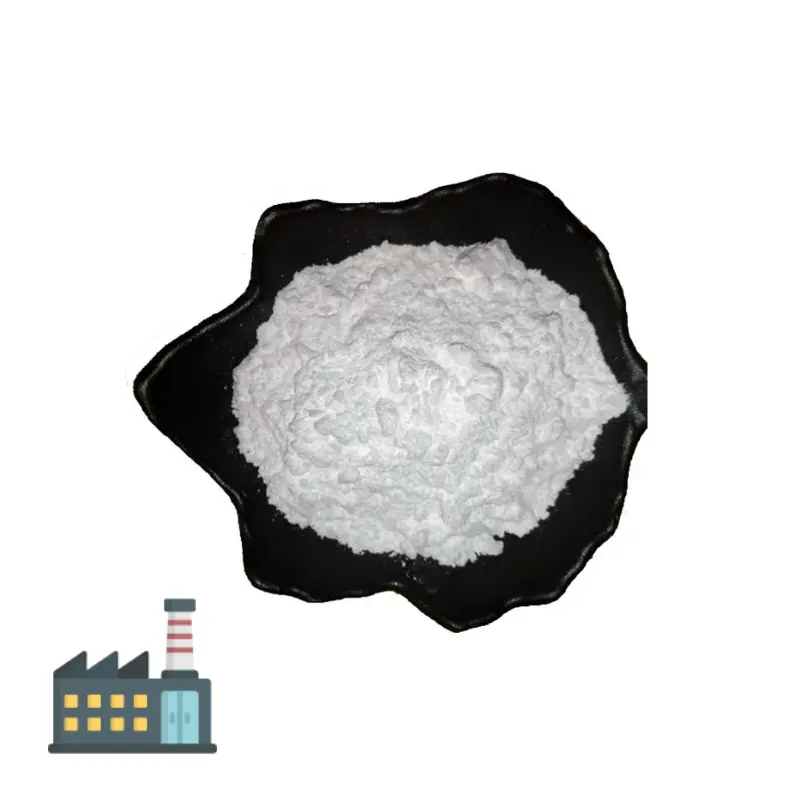Hebei Messi Biology Co., Ltd. stated that anhydrous magnesium carbonate (MgCO3) is a single crystal of MgCO3 orthosalt. It mainly exists in the form of magnesite in nature and belongs to the calcite structure and trigonal crystal system. Because anhydrous magnesium carbonate has the advantages of high thermal decomposition temperature, large heat absorption, decomposition to produce a large amount of carbon dioxide (CO2), high activity of the decomposition product magnesium oxide (MgO), and flame retardancy, it is widely used in fields such as thermal insulation, high temperature resistance, and fireproof insulation materials. It has great application prospects. At the same time, anhydrous magnesium carbonate crystals have diverse morphologies and are cost-effective. They are a multifunctional fine inorganic material that are often used as additives for materials such as functional ceramics and carbon anodes, templates for the synthesis of hierarchical structure materials such as porous carbon, drugs, and adsorbents. It is an excellent carrier for materials, a refiner for magnesium alloys, and used as a catalyst, sintering agent, template agent, inorganic porogen, etc. It has important industrial application value and has attracted much attention in the field of new materials.

Using magnesium chloride as the magnesium source, urea as the precipitant, and sodium citrate as the additive, hydrothermal reaction was performed at 180°C for 24 hours to synthesize irregular flower-shaped and spherical anhydrous magnesium carbonate crystals with an average particle size of 15~20 μm. However, it only preliminarily explained the evolution law of crystal morphology under the action of sodium citrate. Use a slurry prepared from magnesium hydroxide with a particle size of 200~300nm as the magnesium source, and potassium citrate as the additive. Under the conditions of a temperature of 120~150°C and a pressure of 0.3~0.7MPa, CO₂ gas and water are continuously introduced. After 6 hours of thermal reaction, rhombohedral bulk anhydrous magnesium carbonate crystals with an average diameter of 2~4 μm were obtained, and it was confirmed that potassium ions can promote crystal growth, but the particle size requirements of the raw materials are relatively high. Magnesium sulfate, urea, and auxiliary sodium hydroxide are used to prepare anhydrous magnesium carbonate through microwave heating. This method can prepare anhydrous magnesium carbonate with regular morphology and uniform size in one step.
Magnesium chloride hexahydrate and ammonium bicarbonate are used as raw materials to synthesize rod-shaped magnesium carbonate trihydrate (MgCO3·3H2O) precursor, and MgCO₃·3H₂O is used as raw material and prepared through the hydrothermal reaction of MgCO3·3H2O and ammonium chloride (NH, CI). Anhydrous magnesium carbonate. MgCO3·3H₂O is mixed with a mixed solution of water and ethylene glycol, and CO2 is introduced at a temperature of 150°C to prepare anhydrous magnesium carbonate. This method has a simple process and is easy to operate. Ultrafine MgCO3·3H₂O is produced through a stator-rotor reactor, and used as raw material for hydrothermal reaction to obtain anhydrous magnesium carbonate crystals. Magnesium sulfate is prepared using light-burned magnesite powder and ammonium sulfate solution as raw materials, and then the magnesium sulfate and ammonium carbonate solution are mixed to obtain the intermediate product magnesium ammonium carbonate tetrahydrate; low-temperature pyrolysis of the intermediate product produces anhydrous magnesium carbonate whiskers. This method adopts a full cycle process, and the product purity is high, but the preparation process is complicated. Urea was subjected to a hydrothermal reaction with metal magnesium powder, magnesium hydroxide, magnesium chloride, magnesium sulfate and other magnesium source compounds at a temperature of 160°C for 30 hours to obtain anhydrous magnesium carbonate powder, but the reaction time longer.
At present, the preparation of anhydrous magnesium carbonate crystals at home and abroad mainly uses analytically pure chemical reagents such as soluble magnesium salts and carbonates as raw materials. There are problems such as high synthesis cost, low economic efficiency, and by-products that easily cause environmental pollution. Preparing anhydrous magnesium carbonate crystals from the natural mineral magnesite has the advantages of wide sources of raw materials and low cost. It has the potential for industrial scale-up production and can greatly increase the added value of magnesite minerals. MgCO3·3H₂O is a metastable phase thermodynamically and is often used as an intermediate product in the production of basic magnesium carbonate (4MgCO3·Mg(OH)₂·4H₂0). Magnesite was used as raw material to prepare MgCO3·3H₂O crystals, and used as a precursor to synthesize micro-nanoscale anhydrous magnesium carbonate crystals. The hydrothermal temperature, hydrothermal time, and solid-liquid mass ratio (m(MgCO3·3H₂O):m were explored. (deionized water)) and other conditions on the micromorphology and phase composition of the product, and analyze the formation mechanism of anhydrous magnesium carbonate assisted by NH4Cl.
